How to catch an angel
When we came up with the idea of tagging angelsharks underwater, everyone thought we were crazy and that it would not be possible. Tagging, they said, should be done on or alongside a boat, but certainly not underwater!
Why not? Angelsharks lie buried in the sand for most of the time, either dozing or waiting for their prey. This species is quite different from other sharks, which have to be lured in with bait or caught on a long-line. Angelsharks just lie there waiting for you – or for me.

Photo © Carlos Suarez | Océanos de Fuego
The challenge of tagging an angelshark is not so much in catching it, but in restraining it underwater. After extensive research and discussions with other scientists, we decided one afternoon that we would have to build something ourselves. A few sketches later and a visit to the hardware store and la jaula (the cage) was ready.
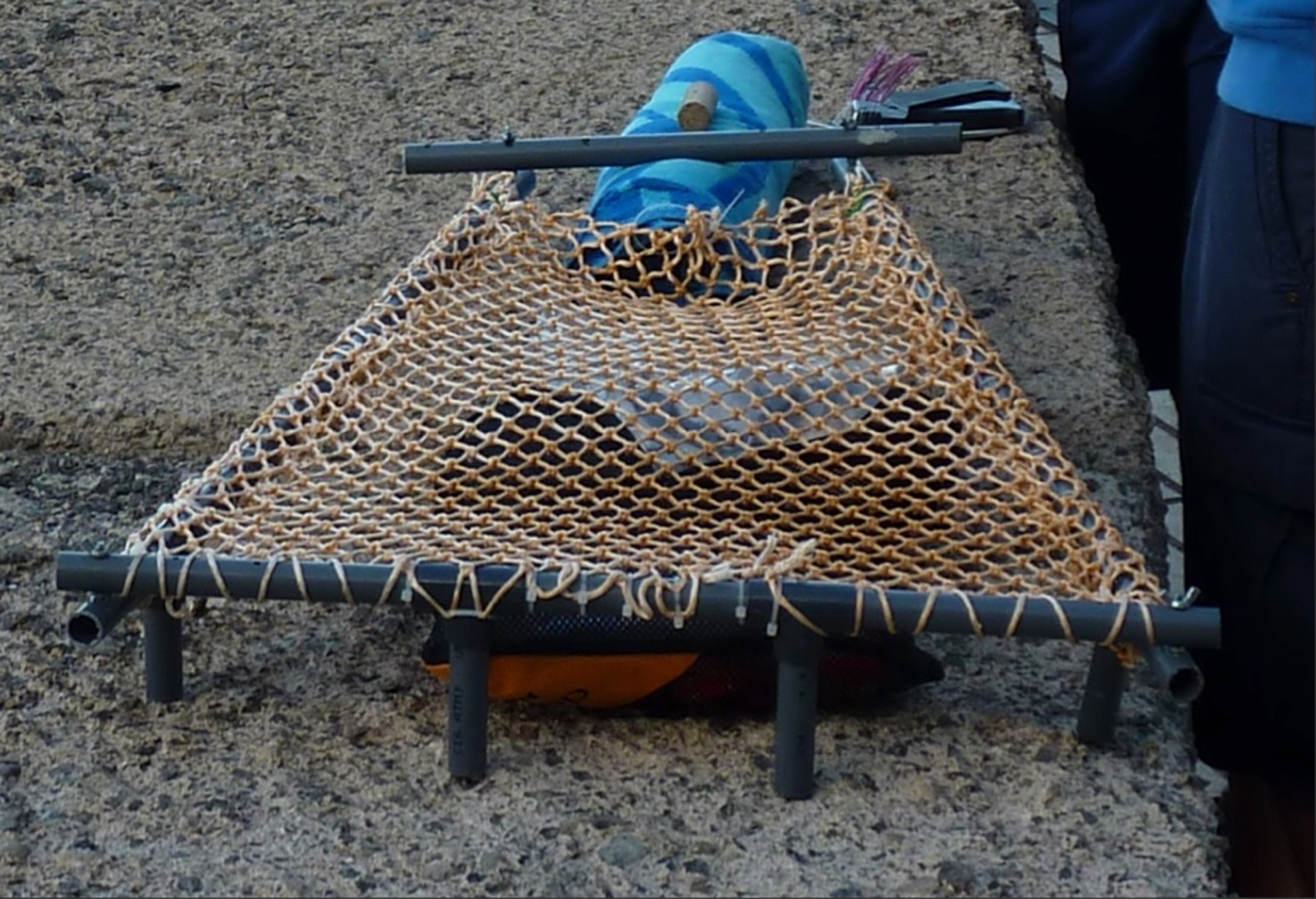
La jaula (the cage), a home-made restraining device for tagging angel sharks smaller than 60 centimetres. Photo © Eva Meyers
Now we just had to figure out if la jaula really would work. Our first trial was with a 1.1-metre female angelshark and we were somewhat nervous. She became quite distressed when we placed la jaula over her and easily escaped. It took us quite a while to find our second shark, but this one was even larger and we decided not to take the risk. So we had to make some modifications to our cage and came up with la jaula 2.0. This time we made sure it was impossible for a shark to escape on either of the long sides.
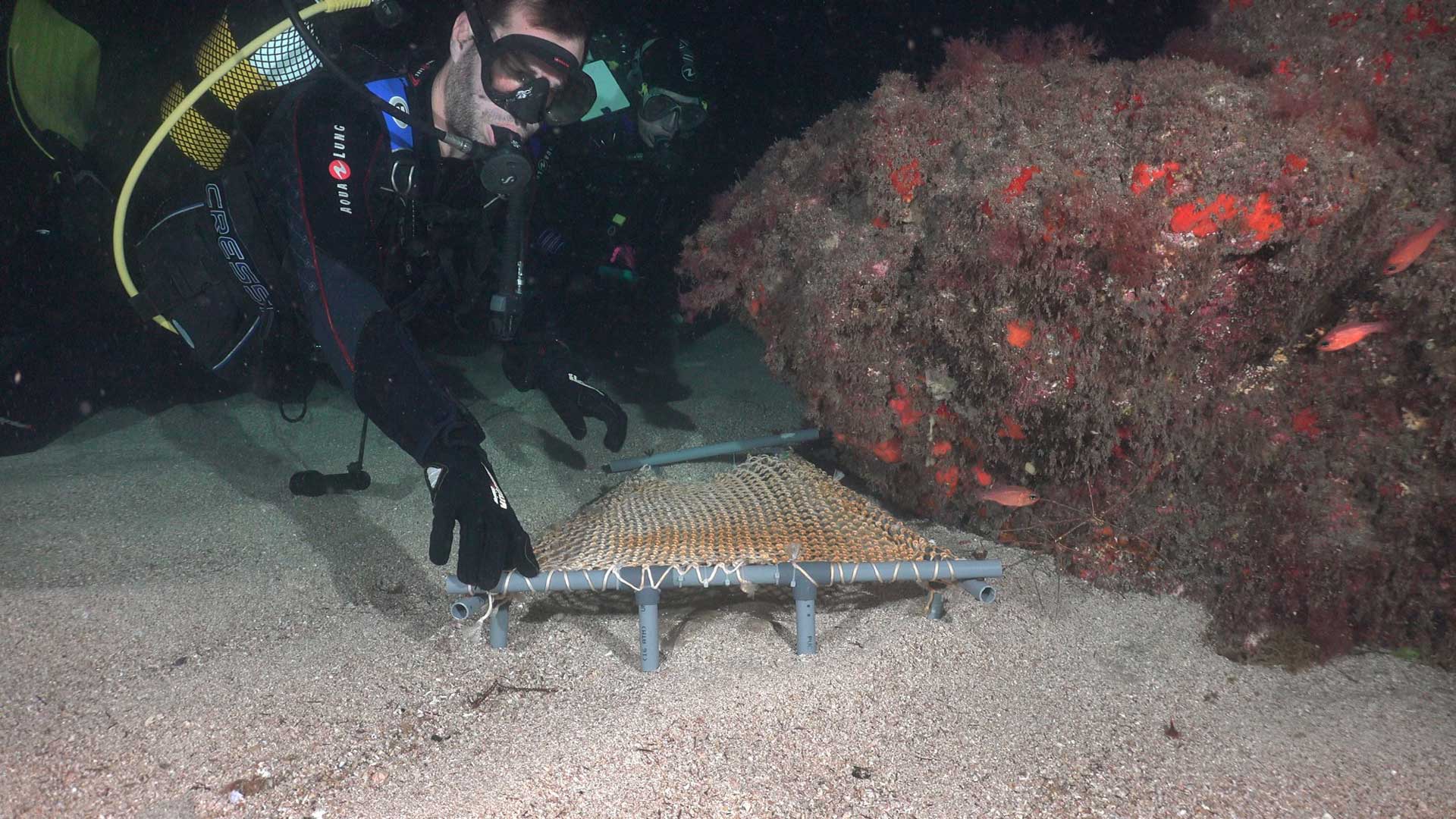
La jaula 2.0 in action. Photo by Michael Scholl | © Save Our Seas Foundation
La jaula 2.0 proved to be a success and our next step was to decide where to tag the sharks and which tags we would use. Even though a ‘flat shark’ with impenetrable skin was new to all of us, we managed to identify the best methodology to use.
Now, in a procedure that takes no longer than one minute, we can measure, sex and tag an angelshark without removing it from its natural environment. We also take a fin clip for genetic analysis, which we hope will give us insight into the movements and connectivity of sharks within the Canary Islands.
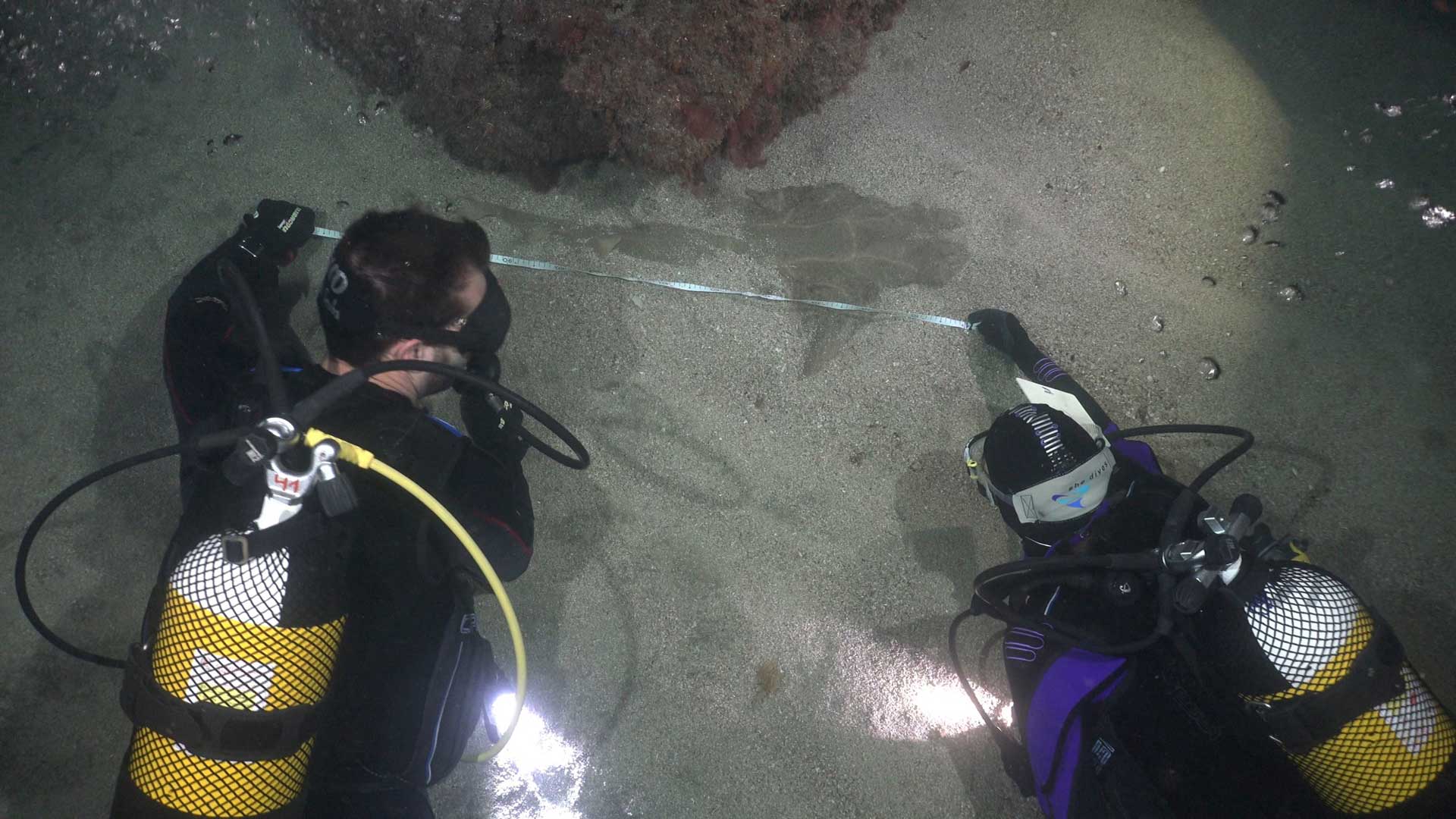
Measuring a 1,1-metre female angel shark in Gran Canaria before tagging her. Photo by Michael Scholl | © Save Our Seas Foundation
With the aid of la jaula and using this underwater tagging methodology, we have tagged 35 angelsharks in Gran Canaria, Lanzarote and La Graciosa. The T-bar tags we deploy have a different colour for each island and a unique code for each shark. Some tagged sharks have already been seen several times and divers have reported them to our online database.
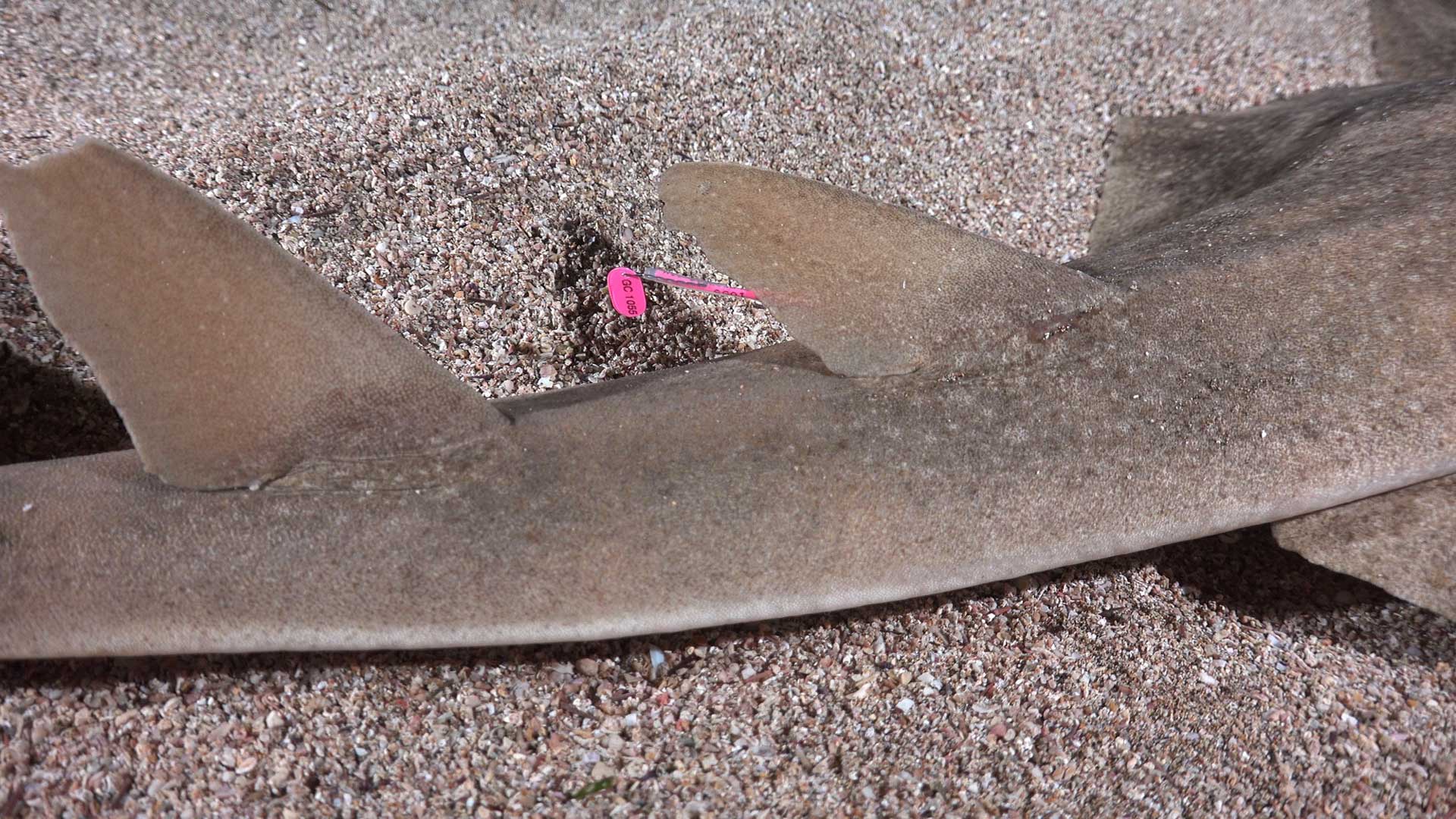
A tagged angel shark in Gran Canaria. Photo by Michael Scholl | © Save Our Seas Foundation
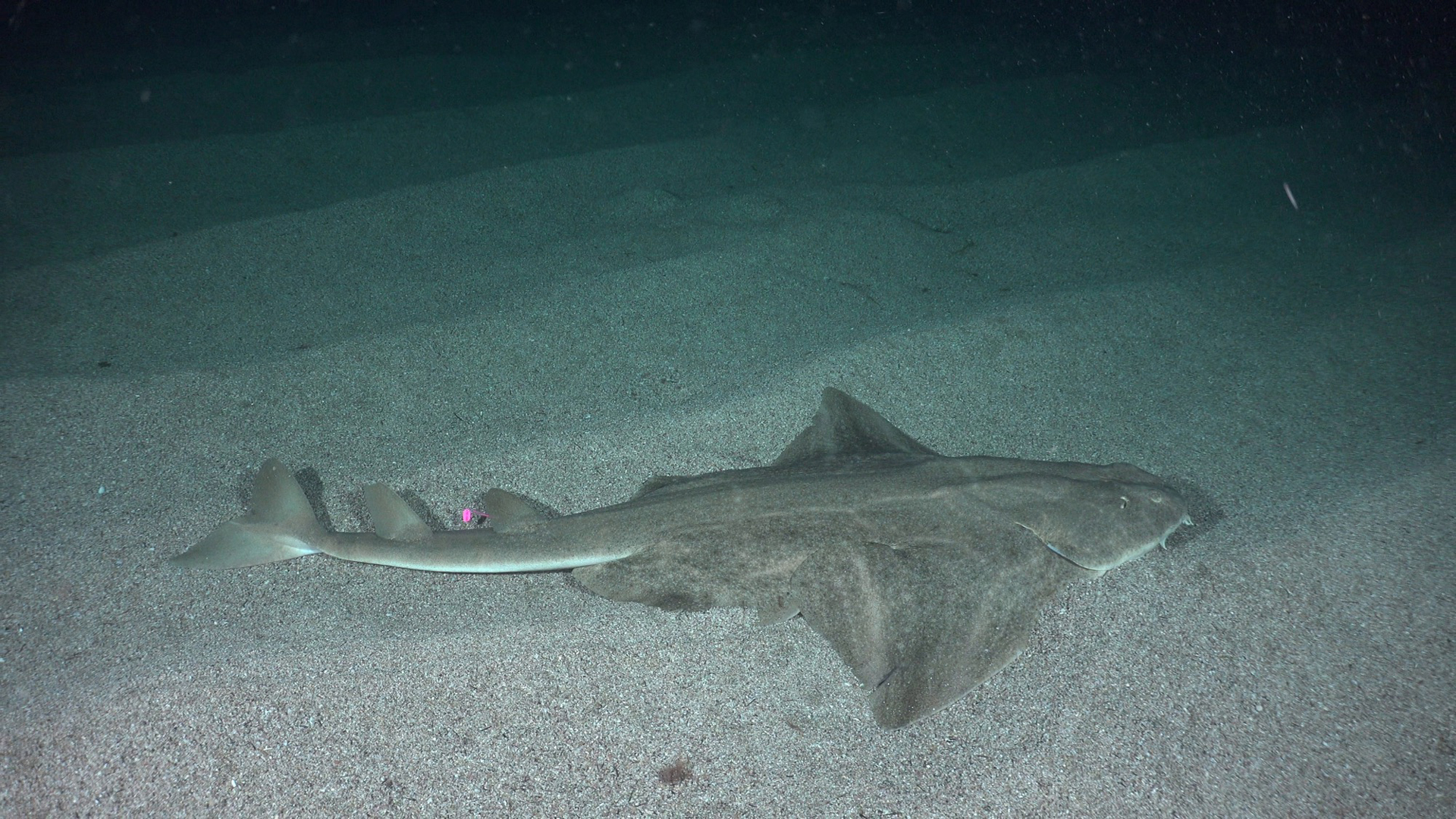
A tagged angel shark in Gran Canaria. Photo by Michael Scholl | © Save Our Seas Foundation
